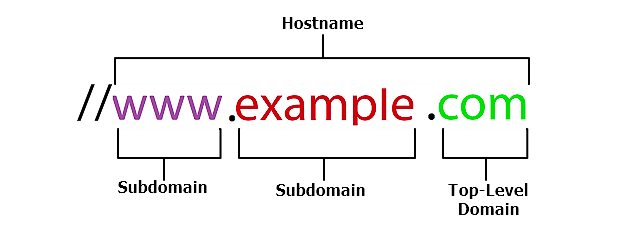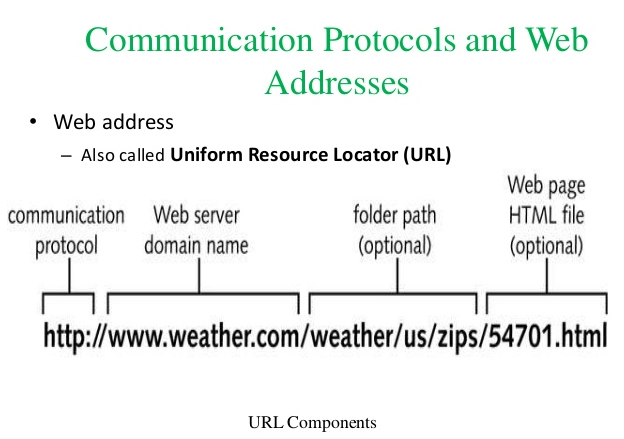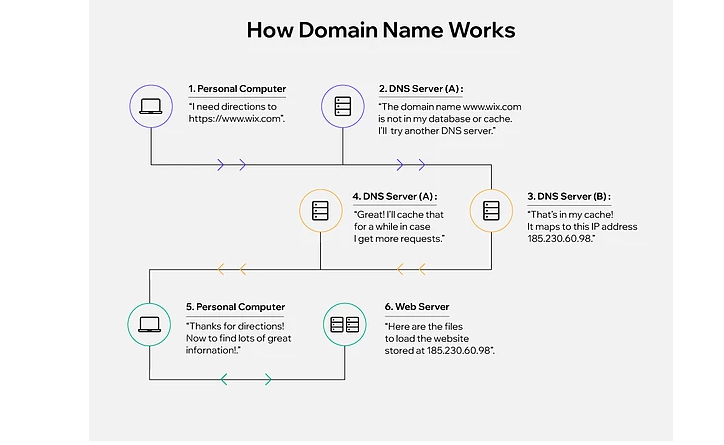Infosites.Biz | All You Need to Know about Domains and Internet ...
- Oscar Garcia

- 9 de jul. de 2021
- 8 min de leitura

A domain name is, unquestionably, one of the most crucial elements of any website - nay, the internet. This seemingly small part of the world wide web is actually the reason you’re able to visit your favorite online stores and blogs. Without it, browsing the net would feel a lot more like algebra class and building an online presence would be a nearly impossible feat.
Speaking of, if you’re planning on building any sort of online presence - whether it’s to open an eCommerce business or to display your work for potential employees to hire you - then getting familiar with the ins and outs of domain names is an absolute must.
Not only will your domain name impact how likely people are to find your website, it will also play a massive role in how they perceive you from the get-go, even before they see what you have to offer. And as they say, you only get one chance to make a first impression.
Because of all of this - and a lot more you’ll discover soon - you should take the time to learn what is a domain name and how does it work. In this thorough guide you’ll learn the basics of domains and their role in the internet network, as well as the best practices to find and register the perfect domain name for your website.
What is a Domain Name ?
A domain name is the address people type into a browser in order to reach a site. Much like a fingerprint, each domain name is unique to a specific website and cannot be shared or duplicated with other web pages. If you look at the very top of this page, you’ll see that the domain name of this website is wix.com.
Domains were created as a human-friendly way to access the Internet Protocol (IP), which represents a website’s online locator. An IP address is a string of numbers assigned to every computer, consisting of four decimal numbers ranging from 0 to 255 separated by periods. While these seemingly random series of numbers are great for computers, it’s much easier for humans to use words they can remember. And similar to saving a number on your phone, domain names allow us to save 172.217.3.196 as google.com

All domain name registrations are overseen by the Internet Corporation for Assigned Names and Numbers (ICANN), which allocates and assigns IP addresses, runs accreditation systems for domain registrars and keeps a centralized database of all domain names and their IPs. As we’ll see in more detail later in this guide, the ICANN also has the authority to approve new domain extensions (also known as TLDs), manage them and shut them down if they don’t follow the determined rules.
It’s important to keep in mind that, while domain names are commonly referred to as URL (Universal Resource Locator) or web address, they’re actually just a part of it (albeit a crucial one). The basic form of a domain name consists of two elements: name and extension. However, if you take a look at your browser’s address bar you’ll notice there are a lot more parts to it, all of which come together to make up this page’s web address.

How Do Domains Work ?
The internet is a massive worldwide network of computers connected to each other through a global submarine grid of cables. Each of these computers, regardless of whether they operate as personal devices or servers, is identified by an IP address that allows them to communicate with each other in order to send, find and retrieve web data.
As we saw in the previous section, domain names are simply user-friendly versions of these IP addresses, connected to specific websites. In order for computers to be able to find the right web pages, however, the seemingly-random word strings have to be converted back to numbers. This is where the domain name system comes in.
Also known simply as DNS, the domain name system translates any domain name entered in a browser into a computer-readable IP. The system is overseen by ICANN, and is commonly compared to old-school phone books where you would search for anyone’s name in order to find their number. If you’re too young to understand that reference, think of it as a smartphone contact list that contains numbers you’ve never interacted with.
When you enter a domain name into a web browser, a request is sent to DNS servers who search for the name servers connected to that specific domain and forward your request to them. These name servers are managed by the web hosting provider, and after finding the relevant IP, they will send the request to the web server where the website files are stored. The web server uses the IP to find all files associated with it and send all the data back to the browser. All of which happens in under 3 seconds.

The Difference between Domain and Hosting
To create a website you need both a domain name and web hosting. Because of their codependent nature and the fact that - more often than not - they’re provided by the same company, there is often a lot of confusion around the purpose of each of them and how they relate to each other.
The easiest way to understand what is web hosting and how it differs from a domain name is to imagine your website as an apartment complex, where each apartment is a different page of your site. For this building to exist, you’ll first need a piece of land to construct it on. On the internet, the land upon which you build your website is known as web hosting. All the files and data that make up your site - think of them as the foundations of the apartment complex - are stored on web servers that send them out to people who visit your site.
In order for people to be able to visit your site, however, they’ll need to know where to find it. Like we saw early on in this guide, you could technically just share your site’s IP with them and call it a day. Then again, we could technically just share geographic coordinates instead of giving names and numbers to every street and building. As you might have already guessed, domain names serve as the address of your metaphorical apartment complex.
If you want to take it one step further and direct visitors to a specific page of your site, you simply need to add a path after your domain name. Having something like “/blog” is the online address equivalent to adding an apartment number to your physical address.
And, of course, the street people take to visit your virtual apartment complex represents the internet.

Different Types of Domains
The DNS uses an inverted-tree hierarchical structure to manage its distributed database system. On this structure, a dot serves as the root domain and sits at the top of the framework. Below the dot, the domain name space is divided into different levels depending on their position in reference from the root domain.
This results in different types of domains, all of which serve a different purpose:
Top-level domains (TLD)
Second-level domains (SLD)
Third-level domains
Top-level domains (TLD)
A top-level domain, generally referred to as TLD or domain extension, is the rightmost segment of a domain name, located after the last dot and serves to recognize certain characteristics of a website address such as location and purpose.
There are currently 1,503 TLDs available for registration, the majority of which have been added in the last decade, distributed across several types of TLDs. Let’s take a look at the most popular categorizations:
Generic top-level domains (gTLD)
Commonly known simply as gTLDs, generic top-level domains are made of three or more characters and are open for registration by anyone. gTLDs account for the vast majority of domain extension options, with more than a thousand added in recent years through ICANN’s New gTLDs program. Available options range from the traditional .org, .com and .net to rising options such as .icu, .app and .wyz.
Sponsored top-level domains (sTLD)
As the name implies, sponsored top-level domains are those supported and supervised by private organizations. There is a small limited number of sTLDs available, and all registrations must be approved by the agencies or businesses in charge of them and comply with a series of predefined community theme concepts.
Country Code top-level domains (ccTLD)
There are 312 country code top-level domains established for specific countries or territories, identifying them with a two-letter string.
While country code top-level domains were originally intended for business and individuals operating in specific geographical areas, there is also a significant number of website owners who register ccTLDs for branding purposes or to take advantage of certain benefits. This is the case with extensions such as .ai (Anguilla), which is particularly popular within companies in the artificial intelligence industry, and .gg (Bailiwick of Guernsey), which has seen a significant popularity rise in the gaming sphere
The most remarkable case, however, is that of Tokelau’s .tk domain extension. This small New Zealand-owned territory allows individuals and businesses to register any number of domain names for free, and for years has held the title of largest ccTLD and second-largest TLD overall. While it looks like China may finally get ahead of the small oceanic island, according to Verisign's latest report, as you can see on the graph below .tk still has nearly 10 million registered domain names more than the next domain extension on the ranking.

Second-level domains (SLDs)
A second-level domain, also known simply as SLD, is the part of a domain name that comes before the top-level domain. SLDs generally refer to the custom section of a domain name, meaning the words you come up with to represent your brand and website with. For example, in www.infosites.biz “infosites” is the second-level domain.
In some cases, SLDs may be considered part of the domain extension, as registries use them to indicate a specific use of a TLD. This is especially common on sites using ccTLDs, as second-level domains are used to signal the type of site within a region. Depending on the domain registries these SLDs might match gTLDs or use a slight variation or adaptation of them.
For example, commercial websites in Spain may be registered with the domain extension .com.es whereas in the UK they appear as .co.uk. Likewise, in these same countries academic institutions may be registered under .edu.es and .ac.uk respectively.

Third-level domains
Third-level domains appear immediately to the left of a second-level domain. In the majority of cases, where domains have only three levels, they’re commonly known as subdomains. A subdomain is a prefix added to a domain name in order to create stand-alone sites. This helps to manage extensive areas that require their own hierarchy, such as an online store or a blog.
In certain cases, third-level domains are offered as a free domain name that allows you to publish a site at zero cost. For example, when you build a website, the format of your free site’s URL will include your user name as a subdomain, resulting in username.xxxsite.com/siteaddress. After purchasing your own domain name, you’ll be able to create your own subdomains and connect them to the relevant areas of your site.
It’s important to keep in mind that, while third-level domains are usually the same as subdomains, this might not always be the case. As we saw with second-level domains, certain TLDs can have multiple nodes and result in longer domain names with a higher number of levels. For example, you might encounter four-level domains such as news.bbc.co.uk, or even five-level domains like www.village.fairport.ny.us. While there is virtually no limitation as to how many levels a domain can have, a single domain name with more than four levels is considered quite a rare sight.

How to choose a domain name
According to Verisign’s latest industry report, there are 366 million domain names registered across all top-level domains, with thousands more registered every day. Not only does this mean the best ones are already taken, it also puts a countdown timer on how long you have before all your ideas are claimed by someone else.
In order to find a domain name that perfectly represents your brand or concept and is not taken yet, you’ll need a combination of creativity, SEO knowledge, foresight, luck and extensive knowledge on best practices to follow.




Comentários